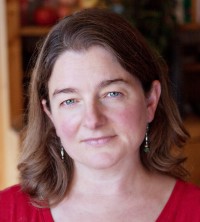A review of The Bradbury Report
The year is 2071 when the narrator of this novel, who calls himself Ray Bradbury to conceal his identity, begins his report. The report details the year he spent living with his own clone in various apartments in Canada, hiding from the U.S. government and supported by an anticloning group.
The conceit of the novel is that the United States has developed human cloning as a medical resource, and hundreds of millions of clones are now institutionalized in an area of the U.S. known as the Clearances. There they live, breathe, work, give up their parts for harvesting, and die without ever seeing the outside world. Ray's clone, made for his medical use in case he would ever need spare parts, somehow escapes the Clearances and is found by an anticloning group, which develops a plan to use the clone as a protest against cloning.
Read our latest issue or browse back issues.
This is a complicated premise, and it may mislead casual readers into thinking that they are picking up a science fiction novel or a political thriller. The book is neither. Rather, it draws on the tradition of dystopic and speculative fiction, fiction like George Orwell's 1984 and Ray Bradbury's Fahrenheit 451, to probe deeply into questions about human nature, purpose and embodiment. It's a beautifully rendered story, never overplaying its cards. At the same time, it's a harsh and difficult piece of work, worthy of but unlikely to find a wide audience.
Part of what makes this book difficult is the state of the main character. Ray's wife died in childbirth 40 years before the action of the novel, and he has never truly recovered himself or his life. He lives alone, is retired from his work as a math teacher and seems utterly uninterested in life. His isolation is broken only when he watches two young neighbor girls play outside. When this eviscerated man meets his 21-year-old clone, the question of which one is more fully human is a valid one.
One day in the midst of Ray's pathetic life, he receives a call from an old friend. Anna is someone he knew in graduate school, a woman who befriended and then fell in love with him. They have since led separate lives. She married, had children and grandchildren, and seems to have lived a fuller, more engaged and meaningful life than Ray's truncated existence. Her recently deceased husband had been a part of the anticloning group that found Ray's clone outside the Clearances, and Anna has been given the responsibility of facilitating a meeting between Ray and his clone.
Thus it is that the three of them—Ray, Alan (as they name the clone) and Anna—meet up in an apartment in Ottawa and spend a year together, living in an odd semblance of family. To imagine Alan, Polansky draws on the tradition of Shakespeare's Caliban, the noble savage, who has received no training in human civilization and has childlike innocence but also a vicious rage, like someone raised by wolves. He is sympathetic but troubled, and he does not make an easy transition to the outside world, such as it is.
The book is primarily a love story—a story about self-love, perhaps, but a love story nonetheless. Ray learns to love his clone, perhaps as much and as well as he has ever loved anyone. He fathers him and fumbles at mentoring him. As he does so, Ray's own language subtly changes. It becomes warmer and less formal. He finds ways of speaking to people that are not as empty. Early in the book, Ray ponders his relationship with the clone in these terms: "I don't think I yet felt for the clone any kind of proprietary concern, which, directed towards the clone, would also constitute a new and misbegotten opening for the propagation and expression of self-love. In the swamplands of self-love, it happens, I am a pioneer." You can hear Ray struggle to find an embodied language, anything that he can use to overcome the abstraction and isolation of his life. As the climax of the book builds, Ray gropes for a better language to express who Alan is to him. "Your mother was my mother," he says to Alan. "Your father was my father." Alan ponders this and says, "You are my brother." "We are brothers," Ray answers.
In the introduction of these kinship words, their shared language is not only concrete and specific, it is rich with references, especially biblical references: Cain and Abel, Esau and Jacob, James and Jesus. The question of who will sacrifice what for whom thus intensifies.
The book is, among other things, an indictment of what Polansky calls, via Ray, society's "staggering narcissism"—its belief that other beings could be created for our benefit apart from love, that love can be entirely removed from the conversation. But, as Polanksy's clone teaches us, love can be removed only if distance is created so that we never meet, never speak with or interact with one another. While familiarity may breed contempt, it also contains the only seed of hope: that in knowing one another, we might come to love one another. The actions of the characters remain dystopic. In Polansky's universe, there are no heroes. Yet each character becomes more human, more vulnerable and more determined as the book progresses toward its startling conclusion.








